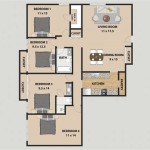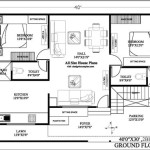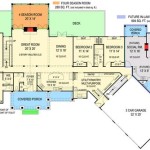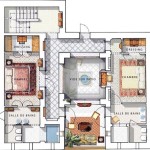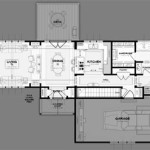Essential Aspects of a Basic Electrical Floor Plan
An electrical floor plan is a crucial document that serves as a guide for the electrical system design and installation in any building or structure. It provides a comprehensive overview of the electrical layout, including the location of electrical outlets, switches, fixtures, and appliances, as well as the pathways of electrical wiring.
Importance of a Basic Electrical Floor Plan
A well-designed electrical floor plan is essential for the following reasons:
- Safety: It ensures that the electrical system is installed in a way that minimizes electrical hazards and meets building codes.
- Convenience: It allows for the placement of electrical outlets and switches in optimal locations, ensuring easy access and ease of use.
- Efficiency: By optimizing the placement of electrical components, it reduces the amount of wiring needed, decreasing installation costs and improving energy efficiency.
- Maintenance: It provides a clear reference for future maintenance and troubleshooting, saving time and effort.
Essential Components of a Basic Electrical Floor Plan
A basic electrical floor plan typically includes the following components:
- Electrical Outlets: Indicate the location and type of electrical outlets, such as regular outlets, GFCI outlets, and USB outlets.
- Switches: Show the location and type of switches, including light switches, dimmer switches, and outlet-controlled switches.
- Fixtures: Indicate the location and type of lighting fixtures, ceiling fans, and other electrical devices that require hardwiring.
- Appliances: Mark the location of major appliances, such as refrigerators, stoves, and air conditioners, which require dedicated electrical circuits.
- Wiring Pathways: Show the paths of electrical wiring, including conduit, cable trays, and junction boxes.
- Panelboard: Indicate the location and type of the electrical panelboard, which houses the circuit breakers or fuses.
- Dimensions and Scale: Provide accurate measurements and a scale to ensure proper planning and installation.
Creating a Basic Electrical Floor Plan
To create a basic electrical floor plan, follow these steps:
- Measure and sketch the floor plan of your building or space accurately.
- Identify the location of all electrical components, including outlets, switches, fixtures, and appliances.
- Determine the wiring pathways and indicate them on the plan.
- Label all components clearly and provide any necessary specifications.
- Check your plan for accuracy and completeness before finalizing it.
It is recommended to consult with a licensed electrician to ensure the accuracy and safety of your electrical floor plan, especially for complex installations.
Create An Electrical Plan Roomsketcher Help Center

Electrical Plan Example House App Layout

How To Draw An Electrical Plan With Roomsketcher

Electrical Plan 101 Know Basics Of Edrawmax

House Electrical Plan Diagram Symbols

Do A Professional Electrical Floor Plan Of House

Easy To Use Floor Plan Drawing

Create An Electrical Floor Plan For You On Autocad

House Electrical Plan Engineering World Layout Floor Drawing

Floor Plan App Electrician Easy Electrical Floorplan Now Available

